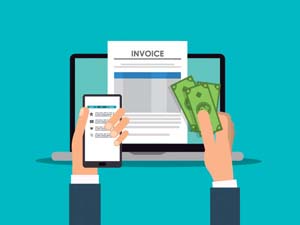
Invoice processing automation has been around for years yet almost 50% of organizations still process paper invoices manually. Why do they continue to accept lost invoices, missed early payment discounts and a lack of management visibility into the efficiency of this critical business process?
Many believe that invoice processing automation is too complex and too expensive to implement. While that used to be the case five years ago, it’s now so easy and cost-effective to implement that even small businesses are taking advantage of this technology. Where do you start?
Stop Wasting Resources on Invoice Scanning
One of the best ways to avoid having knowledge workers mired in the manual processing of paper invoices is to have an experienced document scanning company scan them for you.
A document scanning partner can receive your invoices via PO Box, scan and index them upon receipt and then upload them to your document management and workflow automation software for automated routing and streamlined processing.
Track Invoices Every Step of the Way
If outsourcing isn’t the right option for you, then you will want your staff to scan each invoice as soon as they are received. Doing so in the mailroom is ideal so as not to tie up your AP department and may be better suited for this production-type task.
Whoever scans them, it’s critical to get these electronic invoices into automated workflow software so they can be automatically routed for approval and tracked every step of the way – see Part 1 of this blog post for evidence of the benefits of AP automation.
Integrate for Added Peace of Mind
Some AP workflow software also offers the possibility of “straight-through processing” for PO based invoices, with no need for human intervention when integrated with your accounting or enterprise planning (ERP) system, especially when its features include automatic line item extraction.
When processing is complete, all invoices and supporting documentation can then be stored in a document management system for instant retrieval to achieve compliance, allow for easier and quicker audits and improve document tracking.
Don’t Forget about Accounts Receivable
AR may be less a candidate for document scanning and workflow automation if an organization’s documents originate electronically and less paper is created during processing. However, many organizations still issue paper invoices and receive paper remittances and check payments – all of which need to be scanned, processed and stored in a document management system. Some organizations also need to show proof of delivery, which often takes the form of a paper document.
When workflow automation is applied to manual, paper-based AR processes, the result can be to reduce processing time from weeks to hours, leading to faster payments, optimized cash flow and fewer mistakes.
How to Start: Now Is the Time for Action
In part 1 of our AP Automation Series, we pointed out:
- The average reduction of invoice processing costs is almost 30%
- Many organizations utilizing automated invoice processing report that up to 40% of incoming invoices can now be processed “hands-free”
- 50% of AP automation users report a payback period of 9 months or less and 22% report a payback period of less than 6 months
In this blog post, we identified where to start with AP automation, from invoice scanning to workflow automation to document management – which is even more dynamic and cost-effective in the cloud.
